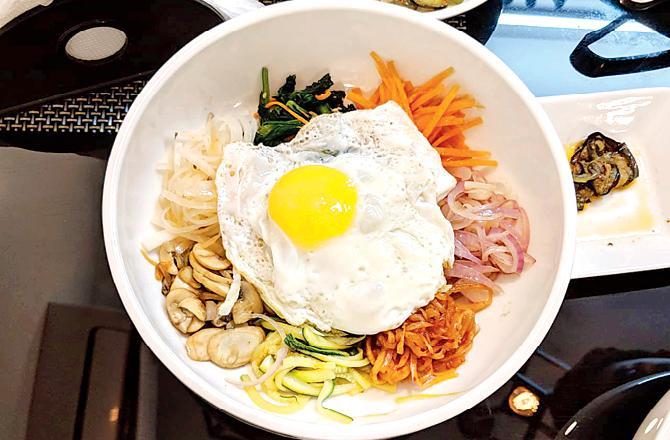SIDDHI JAIN
NEW DELHI: Like most cuisines, the culinary flavors of South Korea showcase its rich history and culture. But, foodies in India often find themselves short of options when it comes to this cuisine which is much less popular than its Japanese and Chinese counterparts.
Chef Ho Min Myung, a South Korean chef visiting India, lists the missing names on India’s South Korean platters.
From the staple Bibimbap, a sticky-rice bowl served with a lot of vegetables, and Japchae, or stir-fried glass noodles, to the more complex chicken dish Dakgangjeong or tofu stew Sundubu-jjigae – options are aplenty for South Korean cuisine lovers, but lack popular following here.
For anyone who has got their hands on the food of this East Asian country, they would recall a decent number of vegetable-based side-dishes that are served with the main dish. What makes this food so unique and organic?
“Since ancient times, South Koreans are used to eating grains and vegetables. We have plenty of resources from the forest because the country has more than 70 per cent of its land as mountains, and field and rice farming has been active.
“We have four distinct seasons and various seasonal ingredients are used depending on its seasonal taste and nutrition. Usually, South Koreans have rice, Kimchi and side dishes for a meal,” Chef Myung told IANS.
The chef says the cuisine makes a healthy diet as it uses a large number of greens.
“Although it’s a trend in South Korea to be a vegetarian due to awareness about healthy food, meat is never missed on an important occasion. However, the cuisine has various vegetarian dishes apart from meat dishes with various reasons, such as topographical features, tradition and growth of a healthy diet trend.”
Namul, japchae, kimchi and fermented sauces of South Korea contain the original tastes of vegetables for the global vegetarians.
Furthermore, South Korean table manners also give a glimpse into their culture.
“The first thing is respect to elders. Young people would not lift their spoon to start a meal until the oldest hold their spoon and start eating.
“Also, you are requested to eat each and every dish on the table equally to show respect to the one who cooked and the one who eats with you,” the chef, who was on his first India visit, said.
Asked if he has got a chance to taste Indian food, Chef Myung said he tasted curry and naan, “yet the spiciness of Indian cuisine with ‘masalas’ is intriguing and attractive as it is different from Korean spicy”.
Myung, along with two other Korean chefs, is curated a Korean Food Fest at the Chaobella Restaurant at Greater Noida’s Crowne Plaza. IANS







